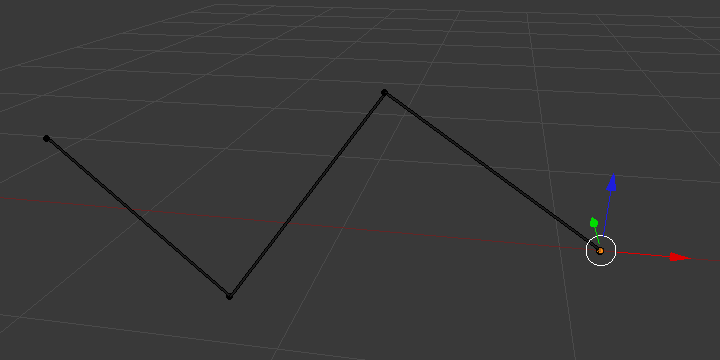Presentación en vistas#
Referencia
- Modo:
Todos los Modos
- Panel:
- Mostrar como
Controla la forma en que los huesos se muestran en la Vista 3D.
- Octaedros
This is the default visualization, well suited for most of editing tasks. It materializes:
The bone root («big» joint) and tip («small» joint).
The bone «size» (its thickness is proportional to its length).
The bone roll (as it has a square section).

Note the 40° rolled Bone.001 bone.#
- Bastones
This is the simplest and most non-intrusive visualization. It just materializes bones by sticks of constant (and small) thickness, so it gives you no information about root and tip, nor bone size or roll angle.

Note that Bone.001 roll angle is not visible (except by its XZ axes).#
- Huesos flexibles
This visualization shows the curves of «smooth» multi-segmented bones; see the Huesos flexibles for details.
- Envolvente
This visualization materializes the bone deformation influence. More on this in the bone page.

- Estructura
This simplest visualization shows the curves of «smooth» multi-segmented bones.
- Mostrar
- Nombres
Displays the name of each bone.
- Formas
When enabled, the default standard bone shape is replaced, in Object Mode and Pose Mode, by the shape of a chosen object (see Shaped Bones for details).
- Bone Colors
Draws bones in their configured colors. Disable to always draw bones in the default color. For more details see Bone Colors.
- En frente
When enabled, the bones of the armature will always be shown on top of the solid objects (meshes, surfaces, …). I.e. they will always be visible and selectable (this is the same option as the one found in the Display panel of the Object data tab). Very useful when not in Wireframe mode.
- Eje
When enabled, the (local) axes of each bone are displayed (only relevant for Edit Mode and Pose Mode).
- Posición
The position for the axes display on the bone. Increasing the value moves it closer to the tip; decreasing moves it closer to the root.
- Relaciones
Whether the Relationship Lines overlay should be drawn from each parent’s tail or head. The lines are always drawn towards the childrens” heads.







